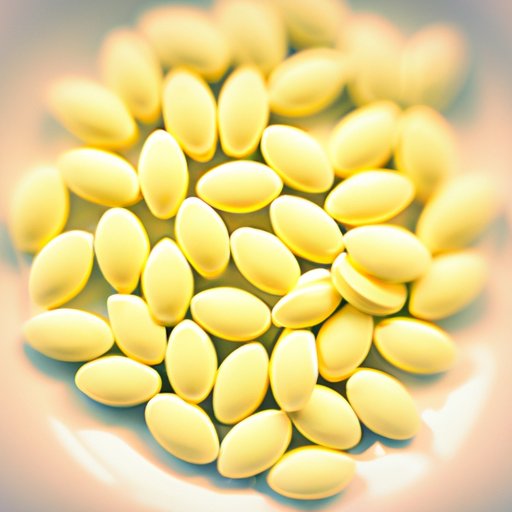
Introduction
Vitamin D is essential for various body functions, including bone health and immunity. While it is possible to get vitamin D through sunlight and supplements, there is a debate on whether to take vitamin D with food or not. In this article, we will provide a comprehensive guide to help you decide which method is best for you.
The Pros and Cons of Taking Vitamin D with Food
One of the benefits of taking vitamin D with food is that it can improve absorption rates. Fat-soluble vitamins, including vitamin D, need fatty acids for digestion and absorption. Taking vitamin D with food that contains healthy fats, such as avocado or nuts, can increase its bioavailability. Additionally, taking vitamin D with food can lower the risk of gastrointestinal side effects, such as nausea or stomach upset.
However, there are also potential drawbacks of taking vitamin D with food. Certain foods, such as those high in fiber or containing calcium, can interfere with vitamin D absorption. Depending on the food consumed, taking vitamin D with food may result in decreased absorption rates.
Vitamin D Absorption: The Importance of Taking It with (or Without) Food
Vitamin D is absorbed in the small intestine, where it binds with fat cells and enters the bloodstream. Once in the bloodstream, it travels to the liver and kidneys to be converted into its active form. Optimal vitamin D absorption is crucial for overall health, including strong bones and teeth, immune system function, and reducing the risk of chronic diseases like cancer and diabetes.
Studies have shown that taking vitamin D with food can increase its bioavailability and absorption. However, the amount of vitamin D absorbed can vary depending on the food consumed. For instance, high-fiber diets may inhibit absorption, while healthy fats can enhance it.
Combining Vitamin D with Your Meals: Does It Make a Difference?
Research has shown mixed results on whether taking vitamin D with food or without makes a significant difference in absorption rates. One study found that taking vitamin D with a meal containing healthy fats increased absorption by up to 32%, while another study showed that taking vitamin D with a high-calcium meal did not affect absorption rates.
While the research is not conclusive, it is suggested that taking vitamin D with food can enhance absorption rates, especially when taken with foods containing fatty acids, as mentioned above.
The Best Ways to Take Vitamin D: With Food or Without Food?
Given the mixed research on whether to take vitamin D with food or not, it is best to base your decision on your individual needs and lifestyle. If you are taking a vitamin D supplement, it may be a good idea to take it with food to improve absorption and reduce potential side effects.
On the other hand, if you are regularly consuming vitamin D-rich foods, such as fish or fortified foods like milk or cereal, taking vitamin D with food may not make a significant difference. In this case, taking vitamin D without food may be just as effective.
Top Tips for Maximizing Vitamin D Absorption: Including the Role of Food
Here are some actionable tips for maximizing vitamin D absorption:
- Take vitamin D supplements or consume vitamin D-rich foods regularly, especially if you are at risk of a deficiency.
- Take your vitamin D supplement with a meal containing healthy fats, such as avocado or nuts, to enhance absorption.
- Avoid taking vitamin D supplements with high-fiber or high-calcium foods, which can interfere with absorption.
- Try to incorporate vitamin D-rich foods into your diet, such as fatty fish, eggs, and fortified foods like milk or yogurt.
Remember, vitamin D is just one of many nutrients needed for overall health. Make sure to prioritize a balanced diet and talk to your doctor if you have any questions or concerns about your vitamin D intake.
Conclusion
In conclusion, whether to take vitamin D with food or without depends on various factors, including the type of food consumed and individual needs. While taking vitamin D with healthy fats can improve absorption rates, some foods may interfere with absorption. By following the tips mentioned above and prioritizing a balanced diet, you can ensure optimal vitamin D absorption and overall health.
If you have any concerns or questions about your vitamin D intake, talk to your doctor, who can provide personalized recommendations based on your individual needs and lifestyle.




